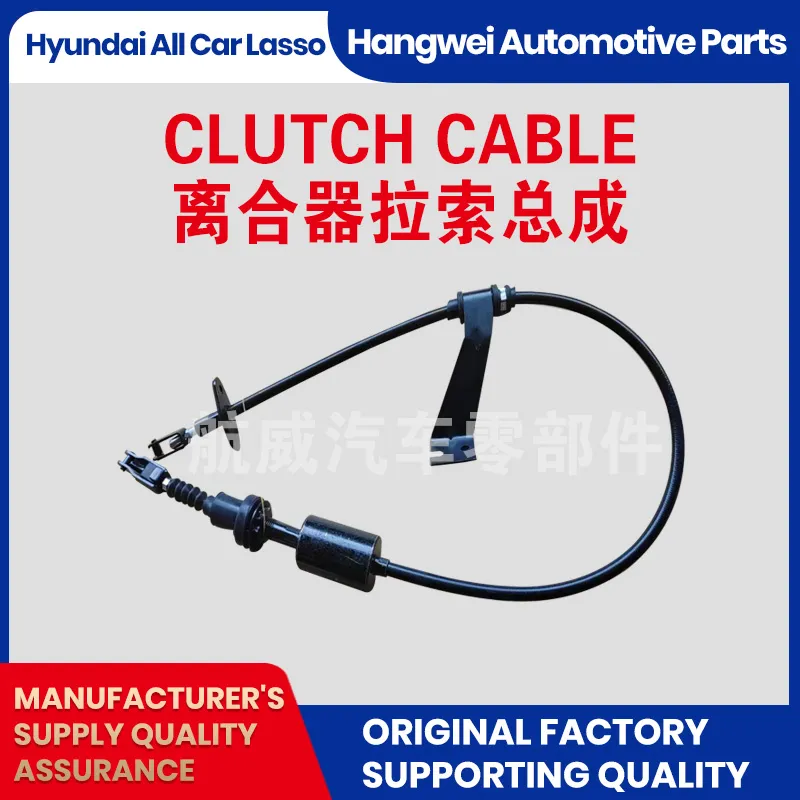Understanding the Function and Importance of Car Throttle Cables in Performance
Understanding Car Throttle Cables A Comprehensive Guide
The throttle cable is a crucial component in many vehicles, serving as the connection between the accelerator pedal and the engine. This seemingly simple cable plays a significant role in the overall performance and responsiveness of an automobile. In this article, we will delve into the function, importance, and maintenance of car throttle cables, while also outlining the differences between traditional cable systems and modern electronic throttle control (ETC) systems.
What is a Throttle Cable?
The throttle cable is a flexible, metallic wire that transmits the driver's input from the accelerator pedal to the throttle body in the engine. When you press down on the gas pedal, the cable pulls on a lever connected to the throttle, which opens the throttle plate and allows more air and fuel into the engine, thus increasing power and speed. This mechanical link provides immediate feedback and control over the vehicle's acceleration, making it an essential element of the driving experience.
The Importance of Throttle Cables
Throttle cables are vital for smooth acceleration and engine response. A properly functioning throttle cable allows drivers to have a direct and intuitive control over their vehicle. The accuracy with which a driver can manage speed is directly influenced by the performance of the throttle cable. If the cable is worn, frayed, or poorly adjusted, it can lead to sluggish acceleration, unresponsive throttle, or jerky movements, affecting both driving comfort and safety.
Common Issues with Throttle Cables
Over time, throttle cables can experience wear and tear. Common problems include
1. Fraying and Breakage As with any cable, constant use can cause fraying. A frayed cable can lead to variable throttle response, while a broken cable can prevent acceleration entirely, leading to potential safety issues.
2. Binding or Sticking If the cable is not properly lubricated or if debris gets into the cable housing, it may bind or stick. This can result in a delayed response when the accelerator pedal is pressed, causing unpredictable acceleration behavior.
car throttle cable

3. Misalignment Throttle cables must be correctly aligned to function efficiently. If they are misaligned due to poor installation or vehicle wear, they can produce erratic throttle response or require excessive pedal pressure to achieve the desired acceleration.
Maintenance of Throttle Cables
Regular maintenance can extend the life of a throttle cable and ensure optimal vehicle performance. Here are some tips
1. Visual Inspection Periodically check the throttle cable for signs of wear, fraying, or damage. Look for any corrosion that may have developed on the metal parts or any signs of binding in the cable housing.
2. Lubrication Keeping the cable lubricated can prevent binding and sticking. Use a suitable lubricant as recommended by the vehicle manufacturer.
3. Adjustment Ensure that the throttle cable is properly adjusted. If necessary, consult the vehicle’s service manual for specific adjustment instructions. This can help maintain optimal throttle response and prevent undue strain on the pedal assembly.
Transition to Electronic Throttle Control (ETC)
In recent years, many manufacturers have transitioned from traditional mechanical throttle cables to electronic throttle control systems. ETC uses sensors to detect pedal position and communicates with the engine control unit (ECU) to manage the throttle plate's opening electronically. While this shift offers enhanced accuracy and the ability to implement advanced features like cruise control and traction management, it also means that drivers no longer have a direct mechanical link to the throttle.
Conclusion
The throttle cable, although often overlooked, is a vital part of a vehicle’s functionality and performance. Whether you drive an older model with a traditional throttle cable or a newer one with electronic controls, understanding how this component works can help you appreciate the complexity of vehicle engineering and the importance of regular maintenance. By keeping an eye on your throttle cable’s condition and ensuring it is properly maintained, you can enjoy smoother rides and reliable acceleration for years to come.
-
Workings of Clutch Pipe and Hose SystemsNewsJun.04,2025
-
The Inner Workings of Hand Brake Cable SystemsNewsJun.04,2025
-
The Secrets of Throttle and Accelerator CablesNewsJun.04,2025
-
The Hidden Lifeline of Your Transmission Gear Shift CablesNewsJun.04,2025
-
Demystifying Gear Cables and Shift LinkagesNewsJun.04,2025
-
Decoding Clutch Line Systems A Comprehensive GuideNewsJun.04,2025
